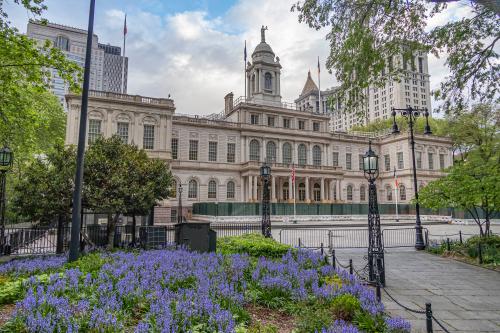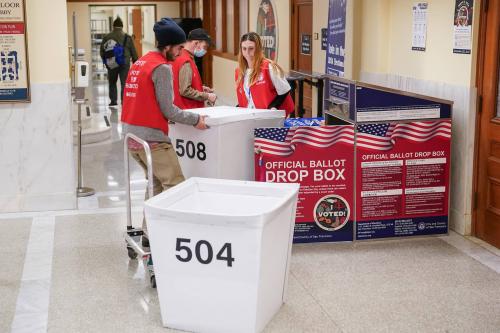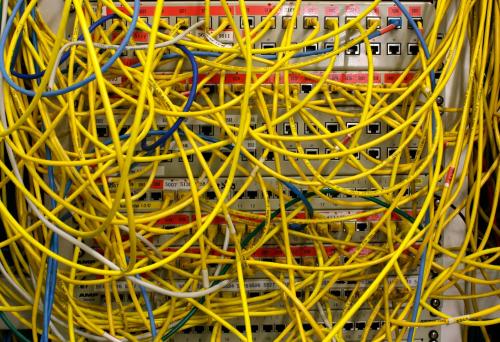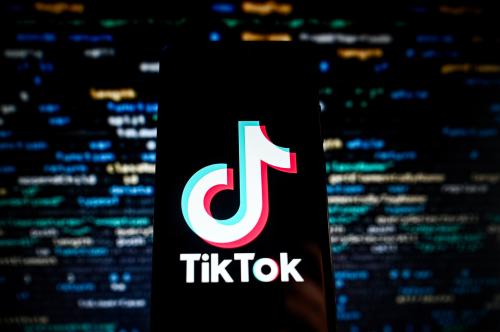Since its release earlier this year, OpenAI has continued to evolve its new Sora technology and introduce it to many potential users. That includes a range of big movie studies, where OpenAI debuted Sora to Paramount, Warner Brothers Discovery, and Universal—despite the dust still settling from last year’s writer and actor strikes. For the film and entertainment audiences, OpenAI has touted Sora’s ability to translate text-prompt data into a minute or less of high-quality video. Before these previews, Sora’s availability was limited to “red team” testers, who were searching for misinformation and bias, as well as critical errors and risks. In late March, Sam Altman, one of OpenAI’s founders, took Sora “on the road” to woo Hollywood into adopting its latest advances—or at least the leaders bold enough to do business with him given writers’ concerns about the technology taking their jobs.
In this first of a two-part blog series, we explore the impact of the Sora technology on the creative industry, especially among industry film giants, who—if enticed to use the technology—could reinvigorate many of the concerns around copyright and intellectual property protections previously voiced by creators, particularly in acting and writing roles. Sora’s evolution stands out as unique from its predecessors in generative AI chiefly due to its much-heightened degrees of visual definition and detail. Building on the foundations of their 2023 generative image model, DALL·E 3, which artificially generates an image based on text input, OpenAI’s Sora combines DALL·E 3’s diffusion model with a transformer neural network to turn pixel fuzz into sequenced images, increasing performance abilities by processing data in chunks. Although Sora is still demonstrating certain imperfections in areas of object permanence and long-range coherence, the model’s grasp of object interaction and spatial relationships far exceeds the capabilities of its predecessors and therefore changes the entertainment industry in fundamental ways.
Sora’s early impacts on the film industry
Almost as soon as Sora was launched, it provoked heated discussions from creatives. Well-known producer and big-studio owner Tyler Perry has already shared that seeing the technology led him to hit pause on an $800 million expansion of his own Atlanta studio, citing concerns about not being able to keep up with the technology, which he believes “will touch every corner of [the film] industry.”
Early demonstrations of Sora may soon confirm Perry’s fears. Currently, the text-to-video model can produce cinematically appealing minute-long videos, which could replace traditionally filmed shots and perhaps short clip commercials. The continued evolution of the technology could have several implications for in-movie set production, including turning physical backdrops into simulated remote sets, potentially replace human acting roles, and dislocate the tasks of entire crews, including writers, designers, and artists involved in the end-to-end process of filmmaking.
Fresh on the heels of the 118-day-long SAG-AFTRA strike and the grievances of the Writers Guild of America (both of which were eventually settled), many are seeing Open AI’s meetings with Hollywood studios, talent agencies, and media executives as another strategic move by the AI firm—only this time, one aimed at appeasing the industry’s production side, rather than its writers. Those involved in the meetings reported that CEO Altman and COO Brad Lightcap’s presentations also were focused on gathering advice from film leaders on how best to approach Sora’s public rollout, set for later this year. And despite the critics, there are some in Hollywood who are optimistic about the possibility of the AI technology, especially about how it could offset time and costs incurred before and during the production process.
Could this be a three-peat for the creative industry?
Despite Hollywood workers averting the first wave of perceived perils by generative AI, they may be at it again soon, if not now. The emerging consensus remains that either legislation or regulation will be necessary to protect the nearly 550,00 people employed by the U.S. film, television, and animation industry from suffering undue consequences of Sora and similar tools’ deployment. Already, a 2024 study has demonstrated that 75% of film companies that have adopted AI reduced, consolidated, or eliminated jobs after incorporating the technology. The study, commissioned by unions representing Hollywood artists like animators and cartoonists, also estimates that by 2026 more than 100,000 of U.S. entertainment jobs will be disrupted by generative AI—with particularly heavy regional impact on jobs in California and New York. The study’s findings are especially concerning, given that its analysis predates the announcement of OpenAI’s Sora text-to-video model.
Preparing for union action
Amid these growing threats, which pre-date Sora, labor unions are preparing for action once again. A member of Animation Guild’s AI strategy committee, Sam Tung, said that the union would prioritize clearer AI rules as a major agenda point during this year’s contract negotiations. However, unlike at the start of the strikes by the WGA and SAG-AFTRA 10 months ago, a greater spirit of optimism resides within this set of workers. At a March rally in Los Angeles, Matthew Loeb, president of the International Alliance of Theatrical Stage Employees (IATSE), urged fellow union members to open themselves to the idea of using AI to increase efficiency, saying “we want some of the spoils of artificial intelligence.” Like the Animation Guild, IATSE plans to prioritize AI guardrails in their contract negotiations this summer. A primary focus of IATSE and similar labor groups will center around how best to fit these guardrails to serve the wide variety of disciplines represented in their membership. While potential threats from AI technologies like Sora may primarily impact the production side, big film studios will not be off the hook when it comes to negotiating strong clauses around AI use now and in the future.
Sora’s evolution marks a significant pivot in the Hollywood worker struggles. While the original strike was spearheaded by TV and film writers, the advent of sophisticated generative video AI is of particular concern for workers responsible for film sets, shooting, and editing. Production workers should bear their writer counterparts’ success in mind, using last year’s union strikes as an example of how they could collectively bargain for expressed protection from video AI tools like Sora.
In the present moment, however, the threat to film production laborers does not seem to be an all-encompassing problem. To date, OpenAI has noted Sora cannot currently handle shot or sequencing continuity, nor can it create Hollywood-standard stories, dialogue, or stage cues. Instead, if adopted soon, Sora is most likely to be used to enhance pitch decks, automate editing tasks, and overcome barriers for initial entry into the film industry.
Sora’s renewal of AI copyright concerns
Much like its companions in the generative AI space, Sora is trained on “publicly available” and “licensed” content, according to OpenAI. But which “publicly available” works are included in Sora’s training sets? Since the company has refused to disclose any further information about the materials on which Sora has been “trained,” aside from the fact that their material included licensed content from Shutterstock, many have inferred that OpenAI’s Sora data practices may include copyrighted videos. In an interview with the Wall Street Journal, CTO Mira Murati had difficulty answering questions about exact sources of Sora’s training data. Responding to a question about whether the tool had been trained on YouTube videos, Murati replied, “I’m actually not sure about that.” Murati’s response was the same for content from Facebook and Instagram. If OpenAI were found to have used data from sources like YouTube, it would be a “clear violation” of the platform’s Terms of Service, according to YouTube CEO Neal Mohan.
It also would not be the first time OpenAI has faced copyright violations. In 2021, met with the possibility of running out of English-language text data for training their latest model, GPT-4, researchers at OpenAI created a tool called Whisper to scrape and transcribe YouTube audio content into digestible text that could be fed to their latest AI system. While OpenAI is certainly not alone in their training abuses of online material, they are less restricted by privacy protections than their counterparts at companies like Google and Meta. In response, a barrage of copyright and licensing lawsuits have been brought upon the AI firm, with the New York Times suing both OpenAI and Microsoft in December 2023 for “using copyrighted news articles without permission to train A.I. chatbots.” OpenAI maintains that their use of the articles was permitted under copyright law, as they transformed the written works for a new purpose. But as litigation lingers, creators appear to still come out on the losing end. In addition to transparency and the opportunity to grant consent, at least, these creatives deserve compensation for their work—upon which many of them depend for income.
For now, Sora’s rapid progress has blurred clear copyright lines, and whether the studios will be enticed by its efficiency (especially by its cost) in the production side of the business remains to be seen. In part two, we will address Sora’s application to elections, which has some of the same culpabilities when it comes to technical performance, only this time the audience will be prospective voters.
-
Acknowledgements and disclosures
Google, Meta, and Microsoft are general, unrestricted donors to the Brookings Institution. The findings, interpretations, and conclusions posted in this piece are solely those of the author and are not influenced by any donation.







Commentary
How OpenAI’s Sora hurts the creative industries
May 15, 2024